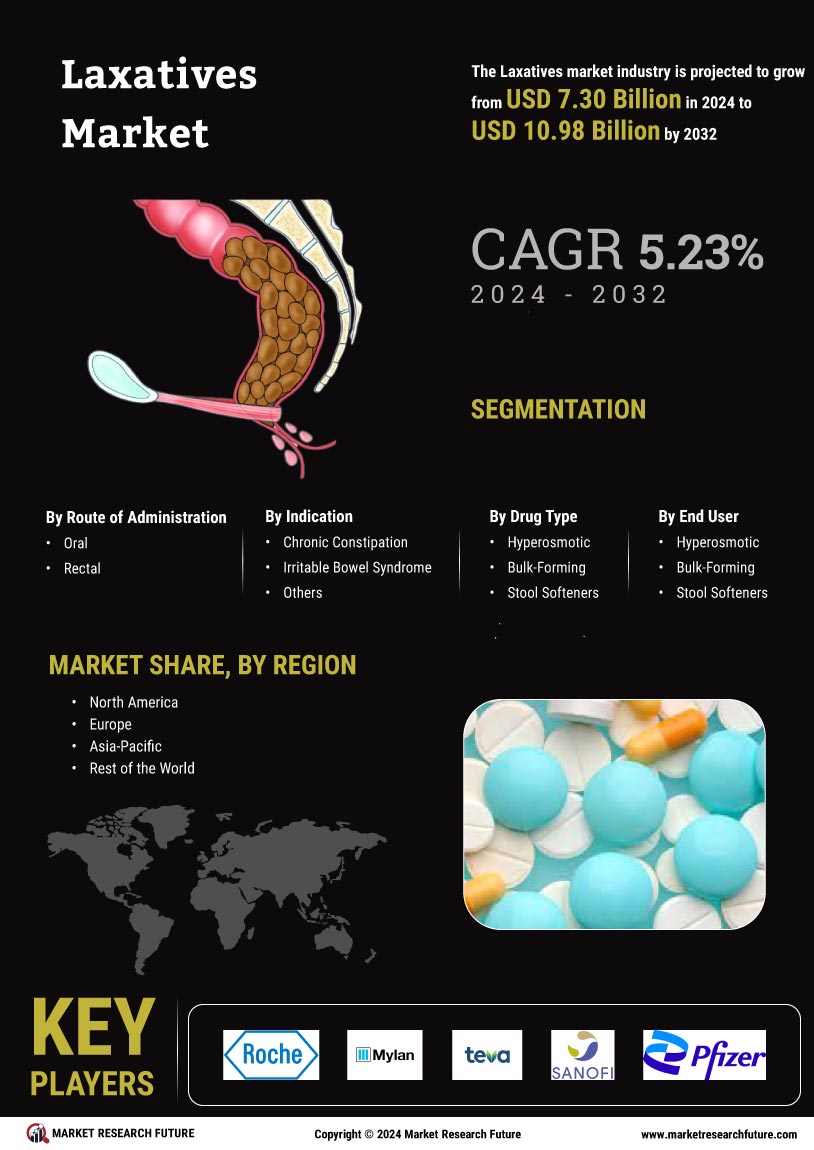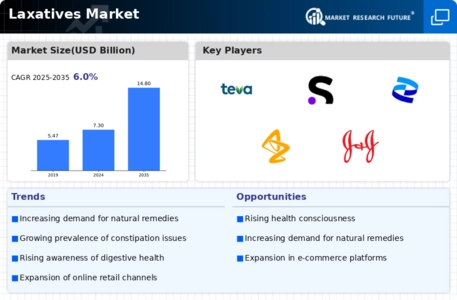The increasing prevalence of eating disorders is driving the market growth
Market CAGR for laxatives is being driven by the increasing prevalence of eating disorders will fuel industry growth. Eating disorders have increased in developed economies such as the United States, the United Kingdom, Australia, and Germany. Overuse of laxatives is particularly common among patients with eating disorders. Laxatives, available over-the-counter (OTC), have also contributed to excessive use. The laxatives market is growing tremendously as a result of this abuse. The growing geriatric population is anticipated to enhance the market's growth rate. Bowel disorders are becoming more common as the population ages.
This is due to their bodies' inability to adequately digest meals. Muscle suppleness loss and poor function can lead to major problems. As a result of these factors, senior citizens are increasingly using laxatives.
Additionally, the geriatric population is expected to significantly impact the market studied, as people over 65 are more prone to chronic diseases. Geriatric people are five times more prone than younger adults to experience constipation-related issues. A poor diet causes this, a lack of sufficient fluids, a lack of exercise, the use of specific medications to treat other medical disorders, and unfavorable bowel habits are a few causes of this inclination.
As per the World Health Organization Facts of 2021, the proportion of the world population aged 60 and up will almost double from 12% to 22% between 2015 and 2050. Furthermore, according to the World Health Organization, by 2030, 1 out of every 6 people will be 60 years old or older. The number of people aged 60 and up is expected to enhance from 1 billion in 2020 to 1.4 billion by 2050. Thus, the growing geriatric population is expected to boost the laxatives market revenue.
High R&D spending for the development of innovative drugs, improvements in healthcare infrastructure, an increase in the elderly and geriatric population, sedentary lifestyles, changing dietary habits, and insufficient consumption of fast food in large quantities are all leading to increased demand for constipation treatment in the coming years. With the increased complexity of the healthcare industry, improved treatment and answers to emerging difficulties are required. Laxatives growth has been revolutionized by healthcare professionals with superior knowledge and expertise, the high prevalence of IBS, chronic constipation, and the development of cutting-edge drugs and treatment procedures.
Constipation is a common disorder experienced by every individual and is evident in 8% to 32.5% of the population worldwide. The increasing geriatric population, sedentary lifestyle and changing dietary habits in developed as well as upcoming economies and thus creating lucrative markets, especially the unexplored markets in the developing economies, is expected to increase the demand for constipation treatment across the globe in the near future. More than 50% of the people belonging to the age group above 50 years of age are prone to suffering chronic constipation.
The average prevalence of constipation in adults has been around 16% worldwide, whereas 33.5% prevalence was seen in adults aged 60 to 110 years. There is a high prevalence of irritable bowel syndrome in emerging markets such as Asia Pacific and Latin America, leading to tremendous market growth over the forecast period.
The increasing prevalence of gastrointestinal disorders and a growing awareness of digestive health are driving the demand for laxatives, suggesting a robust market trajectory in the coming years.
U.S. Food and Drug Administration (FDA)
















